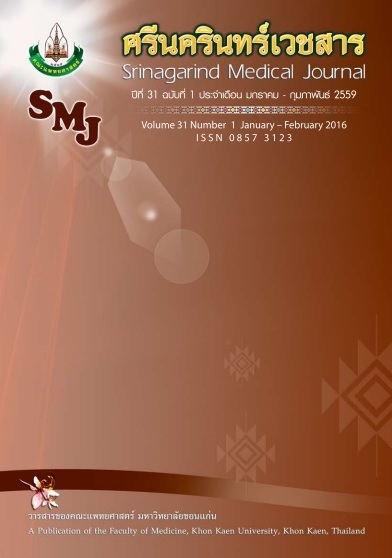Variation of Internal Jugular Vein in Relation to Common Carotid Artery: an Ultrasonographic Survey in Renal Failure Patients, Loei Hospital
คำสำคัญ:
internal jugular vein, variation, vascular access, ultrasonoghraphyบทคัดย่อ
Background and Objective : Cannulation of internal jugular vein is favored in most cases requiring hemodialysis. However, anatomical variations of the size and/or location of the internal jugular vein might prevent proper needle cannulation and numerous serious complication may occur during procedure. The aim of this prospective study is to describe the anatomical variations of internal jugular vein in relation to common carotid artery with use of ultrasound.
Method : An ultrasonographic device was use to explore the variation of internal jugular veins in relation to common carotid artery in 166 consecutive renal failure patients who on going to creation of internal jugular angioaccess. Images of the vessels and demographic data of patients were recorded and analyzed.
Result : Five anatomical variations were found, medial type 0.6%, anterolateral type 24%, partially overriding type 62%,completely overriding type 12%, and anterolateral with abnormal in venous size type 0.6% respectively.
Conclusion : The anatomical landmark for cannulation of internal jugular vein may be reliable in about three-quarters (anterolateral and partially overriding type) of renal failure patients. One-quarters of the patients had internal jugular vein anatomical variations that might contribute to difficultly in landmark guide internal jugular vein cannulation.




